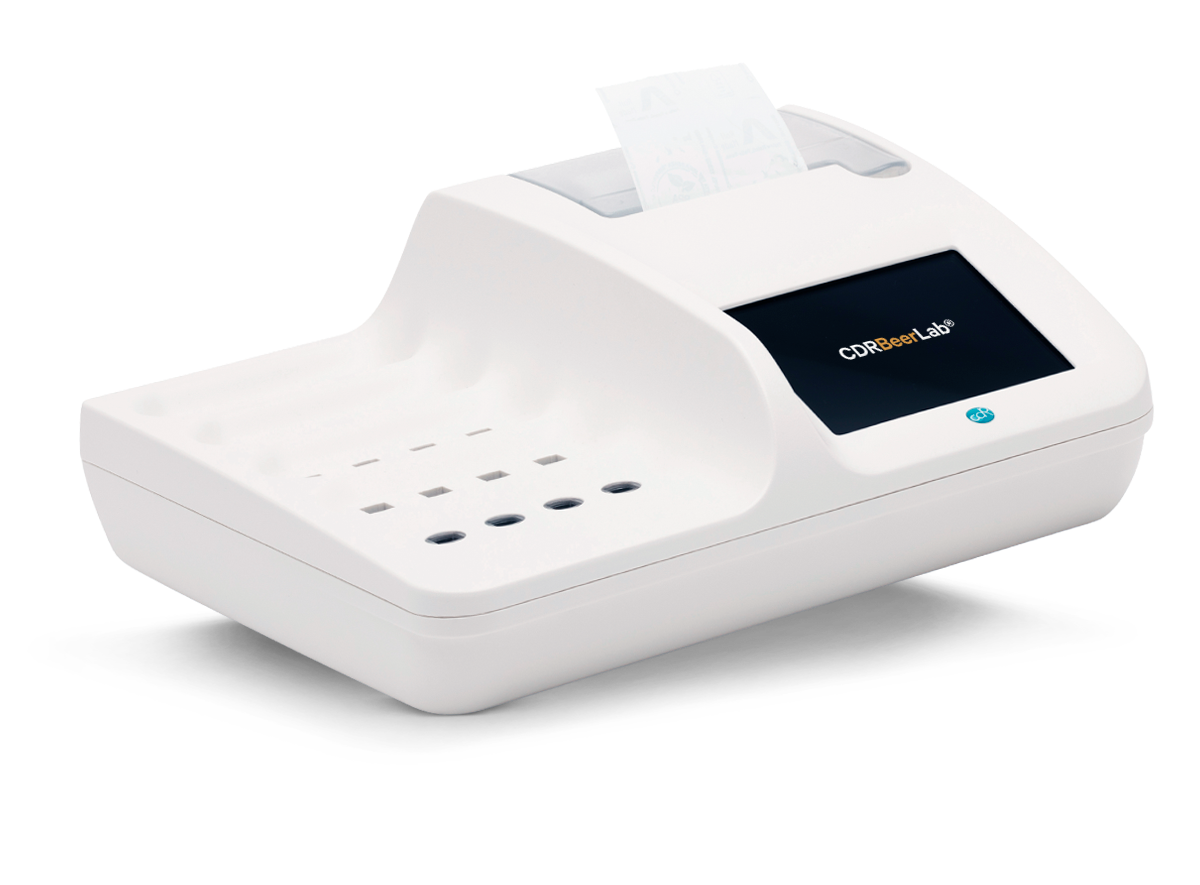Determination of Vicinal diketones (VDKs) in beer
VDKs (Vicinal Diketones) are metabolic products of yeasts which form in constant proportions during fermentation. These include diacetyl, which forms in the highest concentration.
It is important to monitor vicinal diketones levels during fermentation, as excessive VDKs production may be a sign of incorrect fermentation, bacterial or wild yeast infection. Furthermore, VDKs concentration plays an important role in the formation of flavour during the beer maturation time.
Method
Test Principle
The beer sample must be distilled. Vicinal diketones contained in the distillate react with an alpha-naphthol and creatine solution to form a coloured complex which absorbs at 520 nm. The extent of absorption is proportional to concentration.
Calibration curve
The CDR BeerLab® method for the determination of VDKs has good accuracy and is good for analyses requiring distillation and spectrophotometric measurement as is established in the report “Evaluation of new features (VDK, yeast vitality) of the CDR BeerLab® Analyser” performed by the international reference laboratory Campden BRI, innovation, research and technology centre for the food and drinks industry.
5 beer samples were analysed in triplicate for VDKs using the CDR BeerLab® method and the reference UKAS accredited VDK method (Campden BRI Method AM/008 based on Analytica-EBC, 9.24.2, 1999), showed that the results were similar (correlation R2 = 0.99).
...
Reagent test Kits
Measuring range
| Analyses | Measuring range | Resolution | Repeatability |
|---|
The Analyzers for process and quality control in beer brewing
CDR BeerLab®
- Complete analysis panel, supplied already configured
- Up to 16 determinations simultaneously
- Possibility of carrying out analyses of the same sample
- Integrated printer
- Full connections (LAN - USB - Bluetooth barcode/QR code reader)
CDR BeerLab® Jr
- Partial analysis panel, supplied configured with 3 analyses of your choice, implementable
- Up to 3 determinations simultaneously
- Wireless connection to external printer
- USB connections
